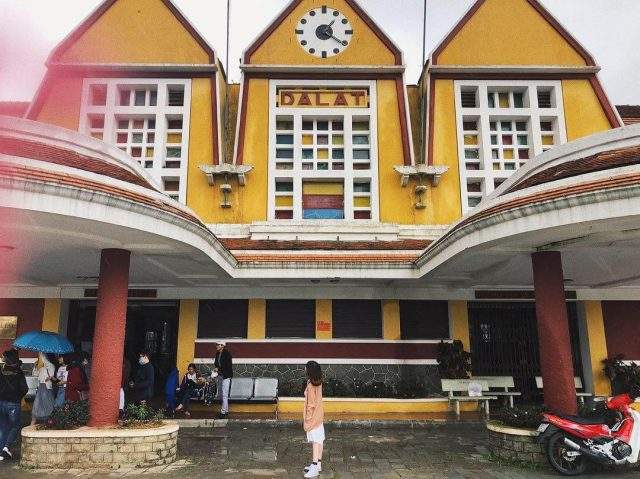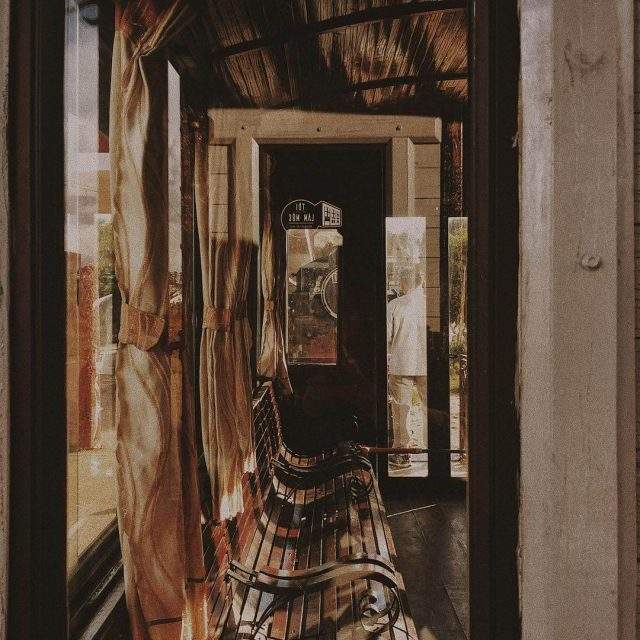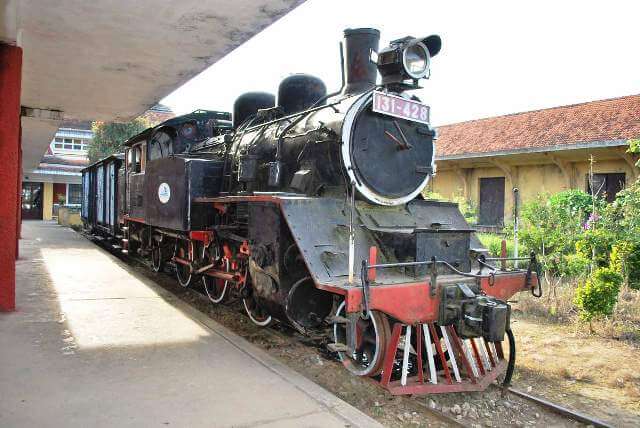The Da Lat Railway Station is the most beautiful historic train station in Indochina, deeply entwined with the history and development of the City of a Thousand Pines. The station has transformed into a unique tourist attraction, a distinctive check-in point that captivates the hearts of many travelers.
With its unique architecture, the Da Lat Railway Station is one of the most captivating destinations in the City of a Thousand Flowers. The allure of the station also stems from its historical relics related to the famous railway line of a bygone era. Let’s explore more about this renowned tourist spot in Da Lat to ensure you have the most comprehensive experience when visiting!
Overview of Da Lat Railway Station
Address of Da Lat Railway Station & Transportation
Where is Da Lat Railway Station located? Da Lat Railway Station is at 1 Quang Trung Street, Ward 10, Da Lat City, Lam Dong Province. Located near the city center, you can easily reach Da Lat Station by motorcycle, car, or taxi. Using personal transportation, you can utilize Google Maps or follow the directions below:
From Da Lat Market, cross Ong Dao Bridge and continue on Tran Quoc Toan Street towards Lam Vien Square.
Turn onto Yersin Street, follow Nguyen Trai Street, and finally, take Quang Trung Street to reach Da Lat Railway Station.

Unique architecture of Dalat Railway Station
Opening Hours & Entrance Fee
Da Lat Railway Station welcomes visitors from 07:30 and closes its doors at 17:00 daily. To capture photos and admire the unique architecture and space of the station, visitors need to purchase an entrance ticket priced at only 5,000 VND per person.
Note: Opening hours and ticket prices for Da Lat Railway Station may vary depending on the time. Therefore, please get in touch with the station management directly for the latest updates!

Ancient designs are still preserved today.
Is Da Lat Station Still Operational?
Da Lat Railway Station is no longer directly connected to Vietnam’s national railway system. However, the station still maintains a tourist train route to Trai Mat Station, located east of the city, approximately 7 km from the city center. The tourist train consists of one locomotive and four cars for the round trip, traveling relatively slowly, taking about 25 minutes.
This allows travelers to leisurely enjoy the scenic suburbs of Da Lat, characterized by vibrant flowers, cool pine-covered hills, and greenhouses cultivating crops along the way. At Trai Mat Station, you can visit Linh Phuoc Pagoda, the Broken Glass Pagoda, a famous Da Lat tourist spot with unique architecture and several Vietnamese records.
The Da Lat – Trai Mat train route ticket prices are currently 88,000 VND and 98,000 VND per one-way ticket, depending on the seat type. Round-trip tickets are discounted by 25%, and group tickets are discounted from 15% to 40%, depending on the quantity. Da Lat Station also sells tickets on the Thong Nhat railway line, serving passengers from Nha Trang Station (Khanh Hoa). The station also provides shuttle car services between Da Lat and Nha Trang.
The “Firsts” of Da Lat Railway Station
The old Da Lat Railway Station is not only intertwined with the history of the City of a Thousand Flowers but also boasts several impressive “firsts”:
– The only railway station in the Central Highlands region of Vietnam.
– The railway station with the most unique and beautiful architecture in Indochina.
– The highest railway station in Vietnam is at 1,500m on the Lam Vien Plateau.
– The only railway station with a steam locomotive.

Dalat Railway Station is the only place where steam locomotives are kept
When Was Da Lat Railway Station Built?
Da Lat Railway Station was constructed from 1932 to 1938. At that time, the station was part of the Thap Cham – Da Lat railway line, connecting the highland city to Phan Rang (Ninh Thuan). This railway line had a length of 84 km, with an elevation change of up to 1,500 meters across the entire route, and construction began in 1908 under the order of the Governor-General of French Indochina, Paul Doumer.
In 1932, when the railway line was completed, Da Lat Station was also established. This railway line was unique, with 12 stations, five tunnels, and 16 km of cogwheel track climbing steep gradients. The cogwheel railway was only found in Switzerland and Vietnam, with an average gradient of 12%.
1972, the Da Lat – Thap Cham railway line was damaged during the war. After the country’s reunification in 1975, the line was restored but operated for a short period due to economic inefficiency. The cogwheel track and railway system were dismantled, and the stations were abandoned.
Today, Da Lat Station has separated from Vietnam’s national railway system and has become a popular tourist attraction. In 2001, it was recognized as a National Historical and Cultural Site, preserving memories of a significant period in the history of the City of a Thousand Pines.
Exploring the Architecture of the Ancient Da Lat Railway Station
The Da Lat Station is a unique masterpiece designed by two French architects, Moncet and Revéron. The station’s architecture reflects the indigenous style with a well-organized, scientific, and incredibly refined structure. The station layout is symmetrical, with the central architecture mimicking the three peaks of Langbiang Mountain and the longhouse roofs of the Central Highlands. On either side, two elongated architectural blocks create harmony in the design.
The central structure has a spacious interior, and in front stands a large clock commemorating when Dr. Alexandre Yersin discovered Da Lat. This central block has only one floor, with two halls in the front—one for passengers and the other for goods—between two platforms where passengers wait for the train. Overall, Da Lat Railway Station has a harmonious architecture with nature, serving as a unique focal point and an essential part of Da Lat’s history and culture.
Capturing the Magical “Instagrammable” Spots at Da Lat Railway Station
With its ancient architecture and romantic surroundings, Da Lat Railway Station is an ideal spot for check-in and wedding photography, attracting numerous visitors. Below are six picturesque corners you shouldn’t miss:
In front of the station
The area in front of Da Lat Railway Station is an ideal check-in point with a spacious courtyard and a picturesque view of the iconic roof and vibrant flower gardens. Here, you can adjust your angles to capture impressive photos.
Ticket waiting area
The waiting area for purchasing tickets at Da Lat Station is a less common choice for photography. Nevertheless, this location offers an artistic setting with glass-paneled cabins, a nostalgic ambiance, and vintage furniture, providing unique photo opportunities.
Wooden train carriages
The wooden train carriages displayed at Da Lat Railway Station are a distinctive check-in point, preserving their antique beauty and historic ambiance. This spot is perfect for vintage-themed photos.
Railway track
The railway track at Da Lat Station is another recommended check-in point. The open space and picturesque surroundings create a delightful setting for capturing beautiful and lively moments.
Steam locomotive
The preserved steam locomotive has been a popular spot for young people at Da Lat Station. You can showcase your cool and unique style here, creating edgy and stylish photos.
Inside the train carriages
Inside each vintage train carriage, the furniture, colors, and arrangements maintain the antique atmosphere. This is the perfect place to capture “so deep” photos in a nostalgic setting filled with the colorful essence of time.
These are the details about Da Lat Railway Station – a famous destination with unique architecture, considered the most beautiful in Indochina. The station holds significant historical importance in the formation and development of the land of a thousand pine trees. With its architectural beauty, nostalgic ambiance, and romantic scenery, Da Lat Station has become the city’s most renowned tourist spot and photography destination of a thousand flowers.
